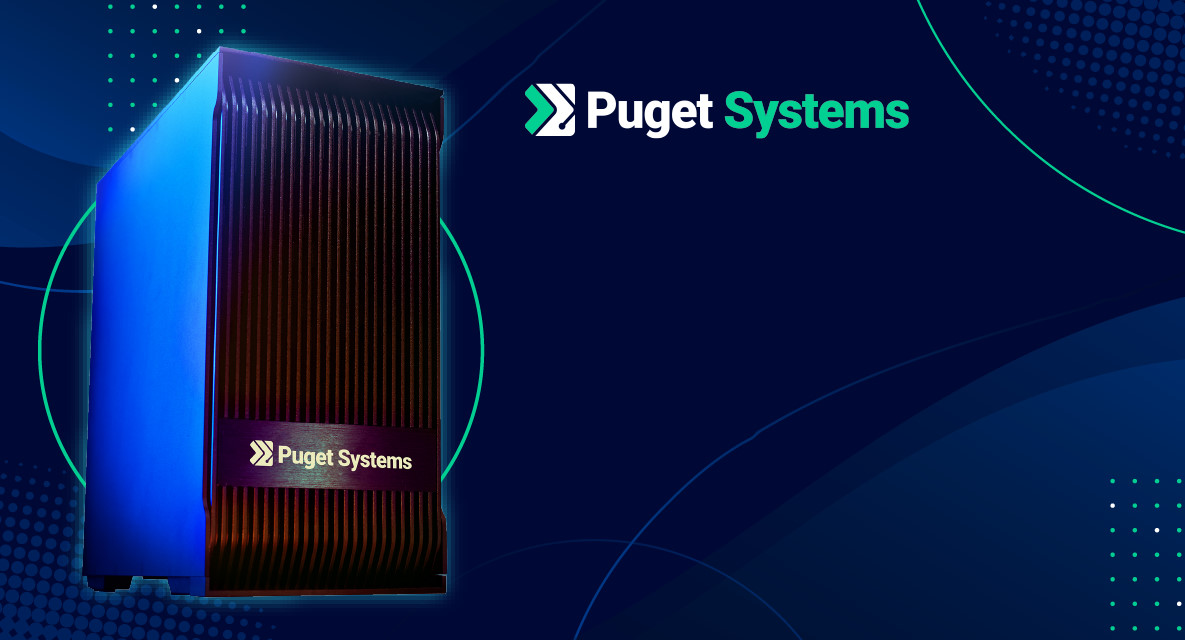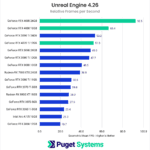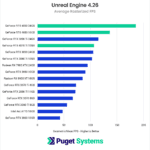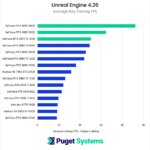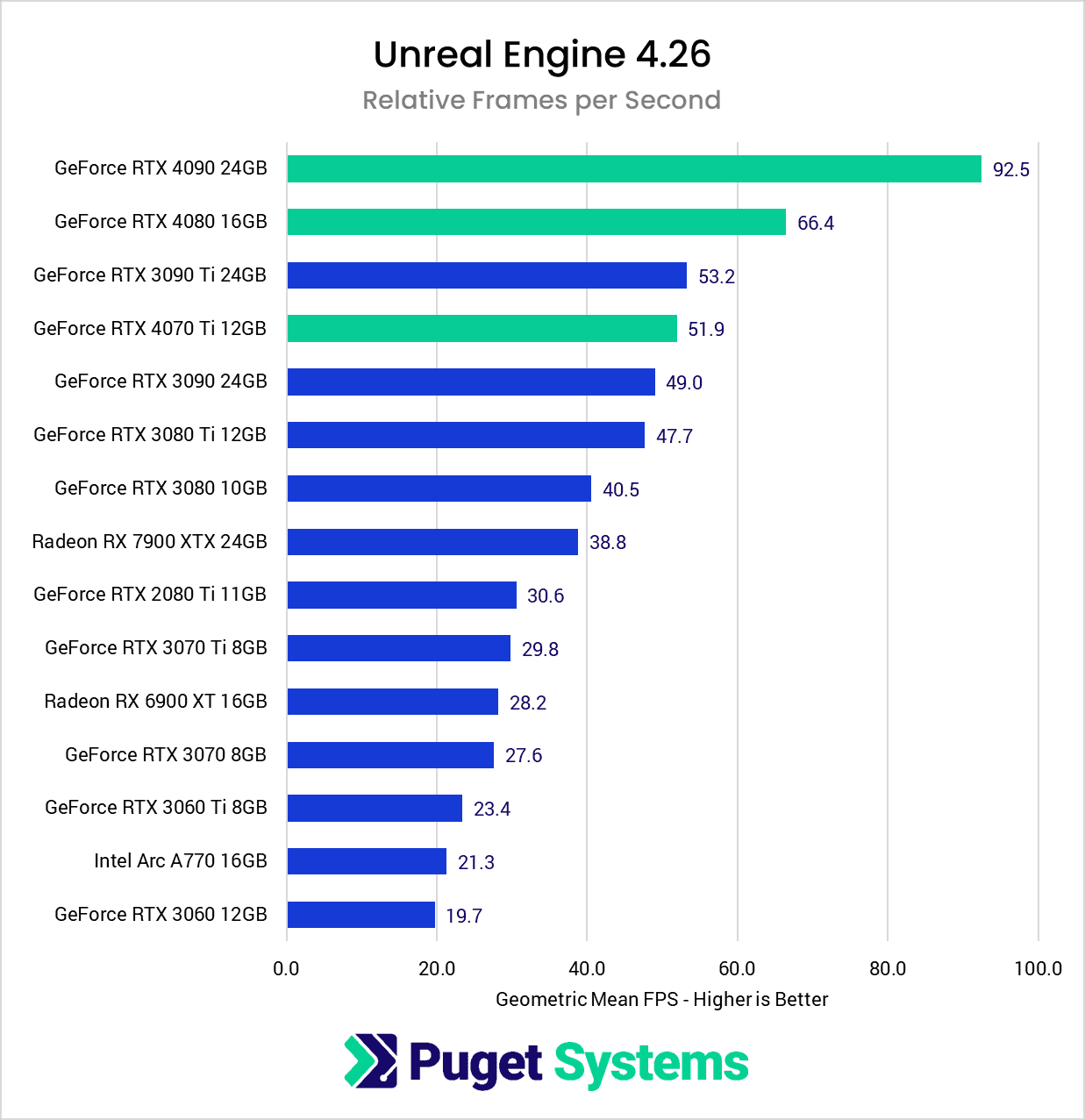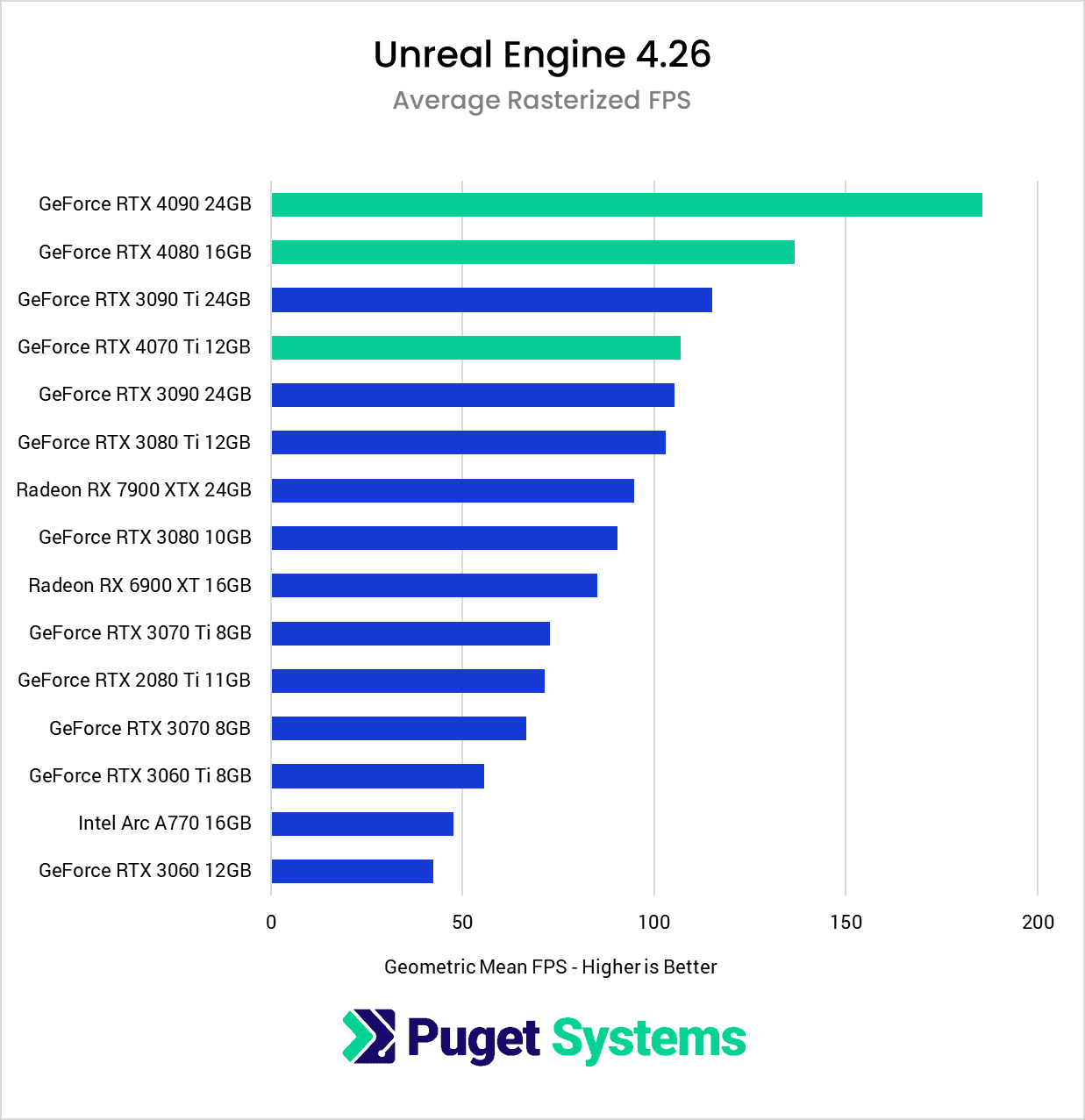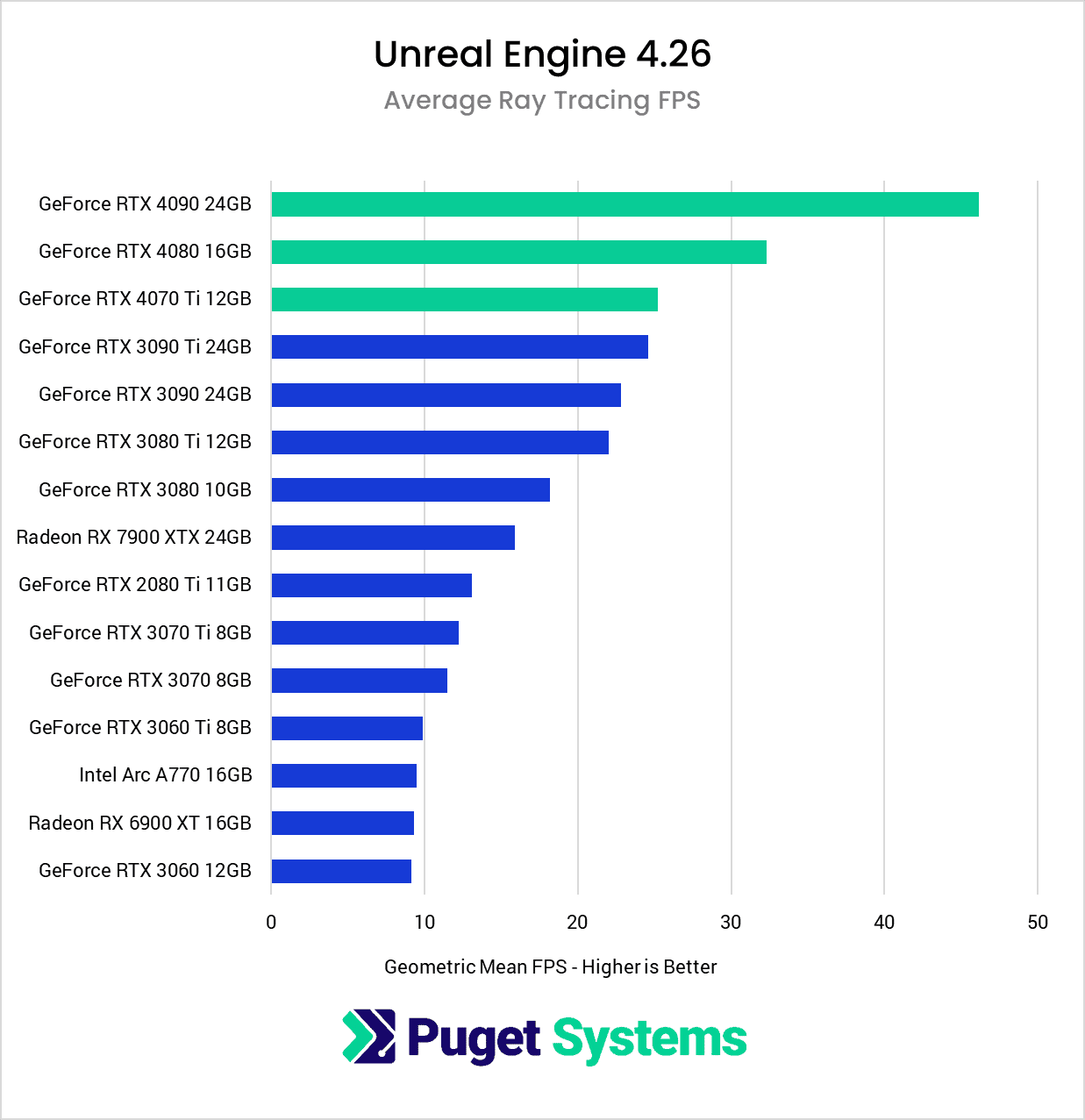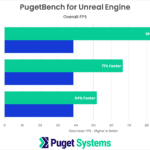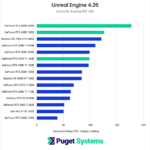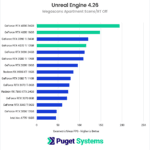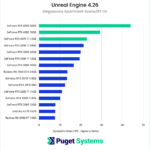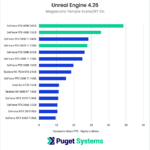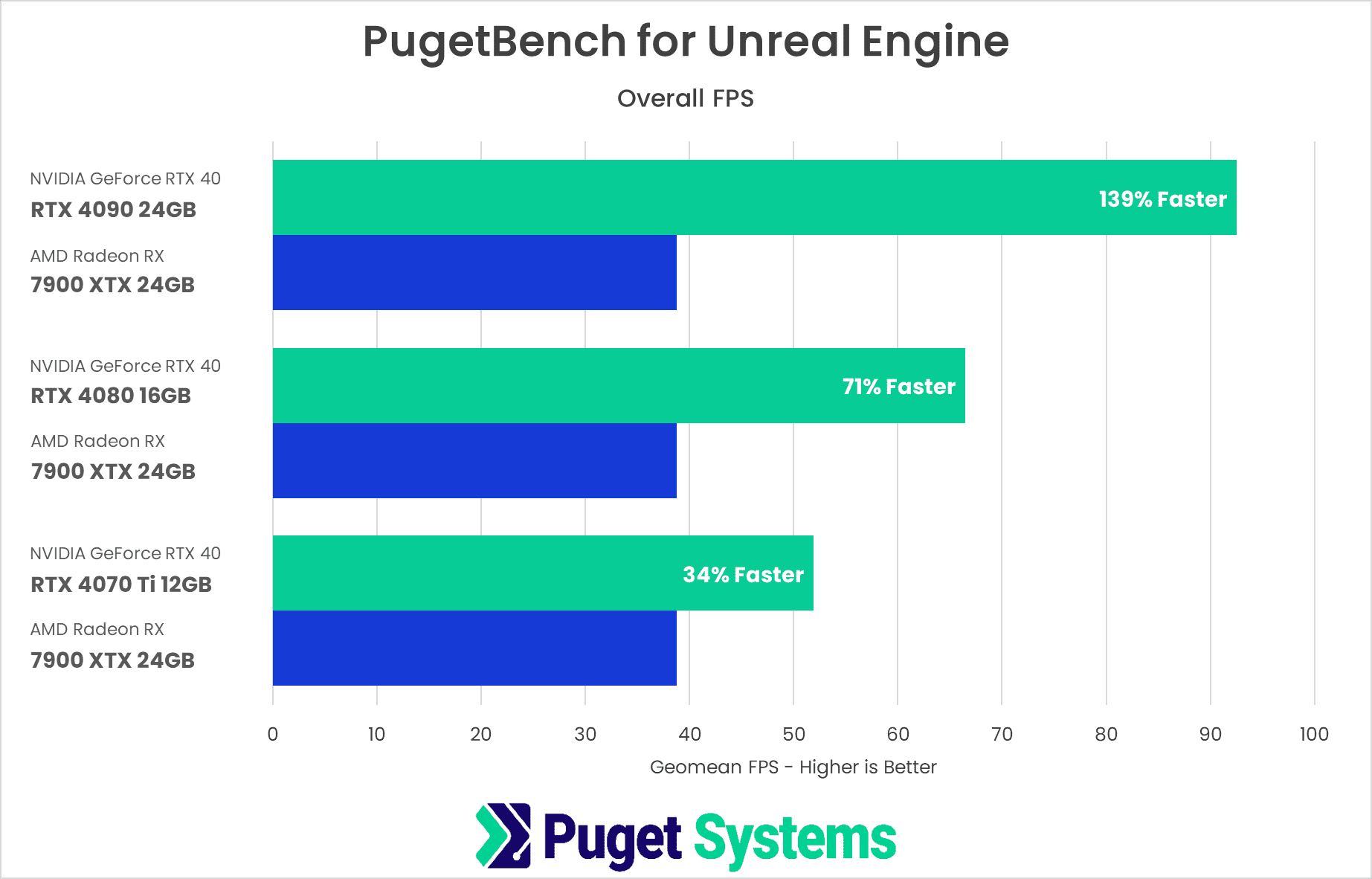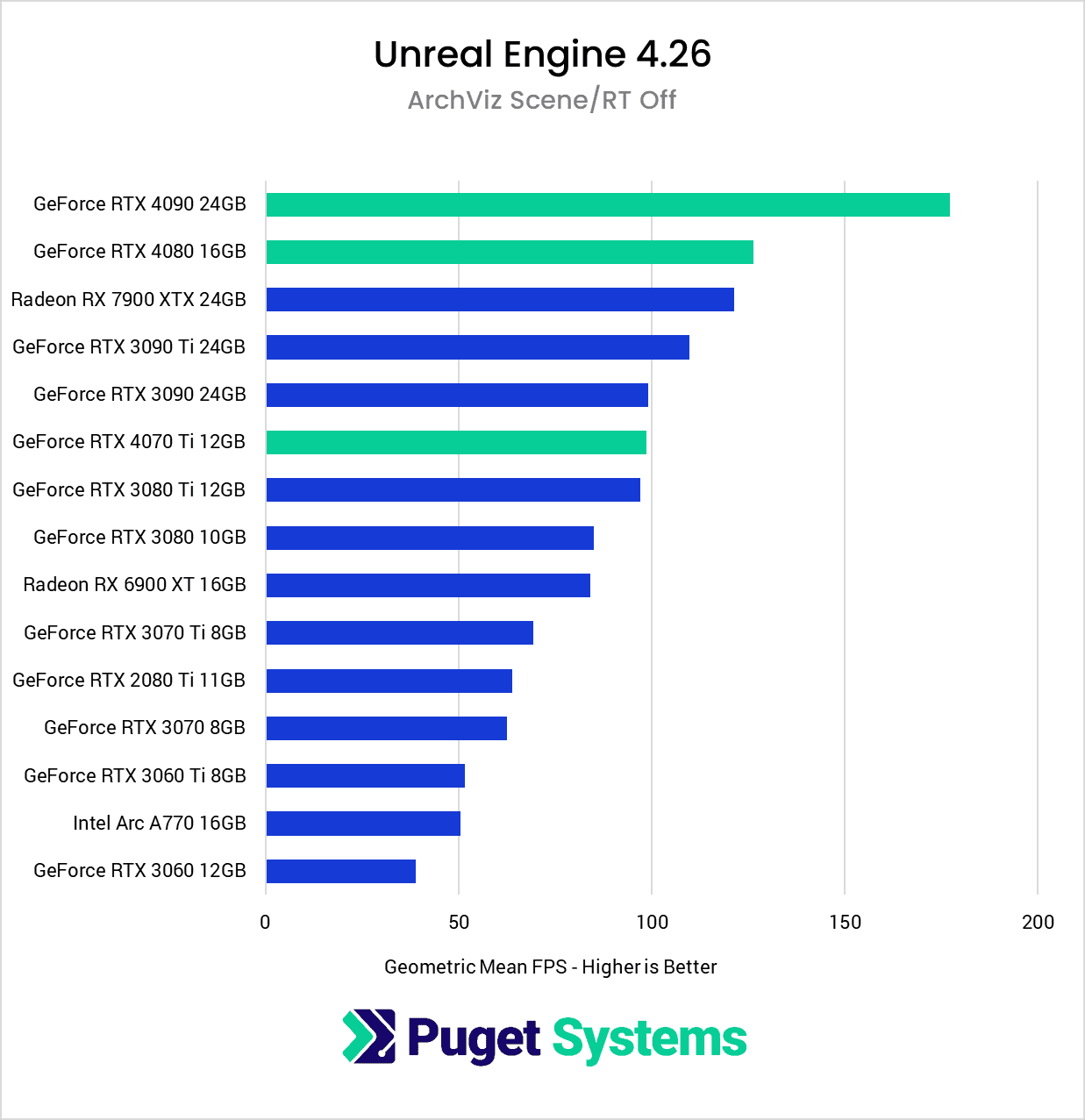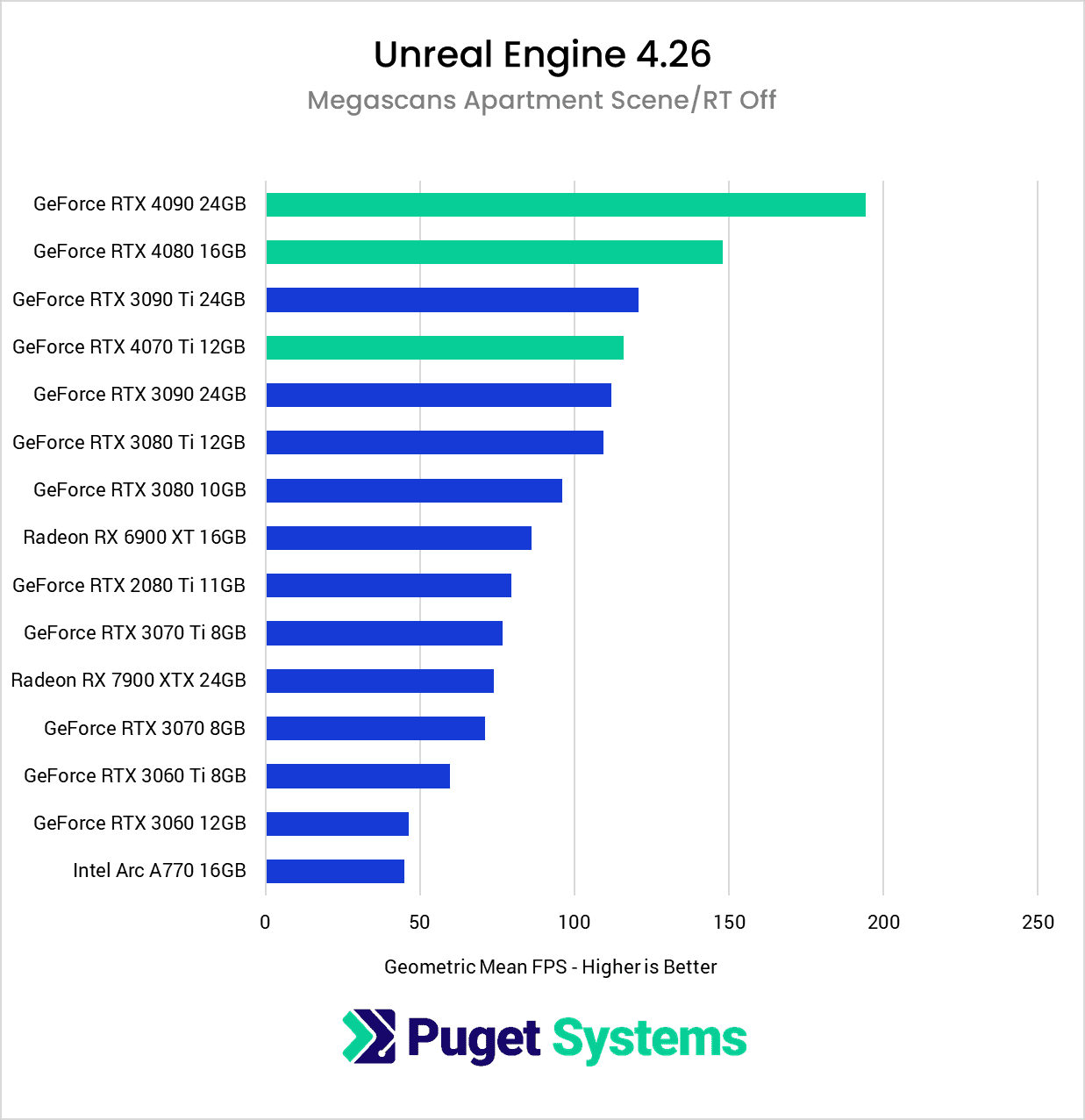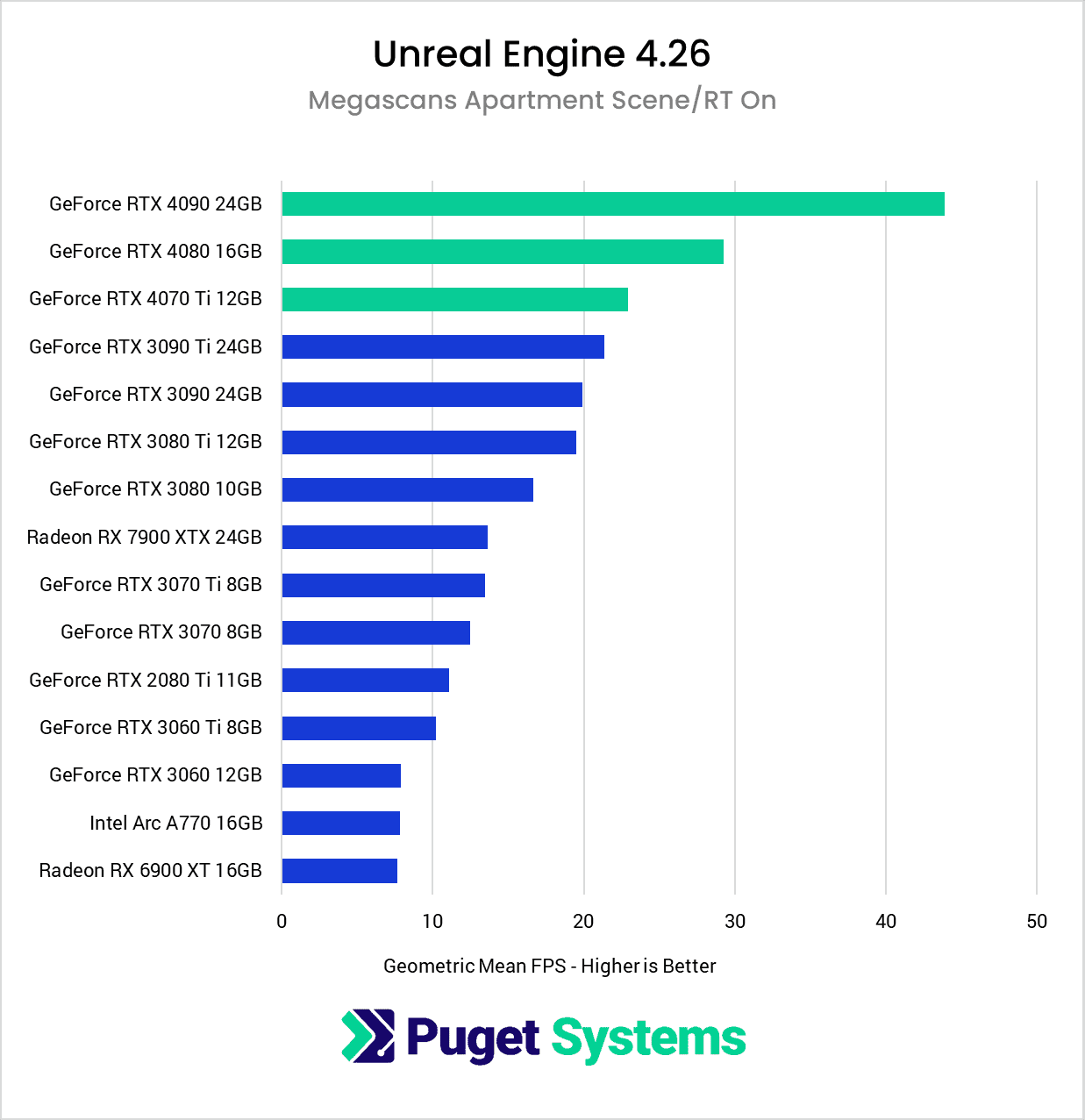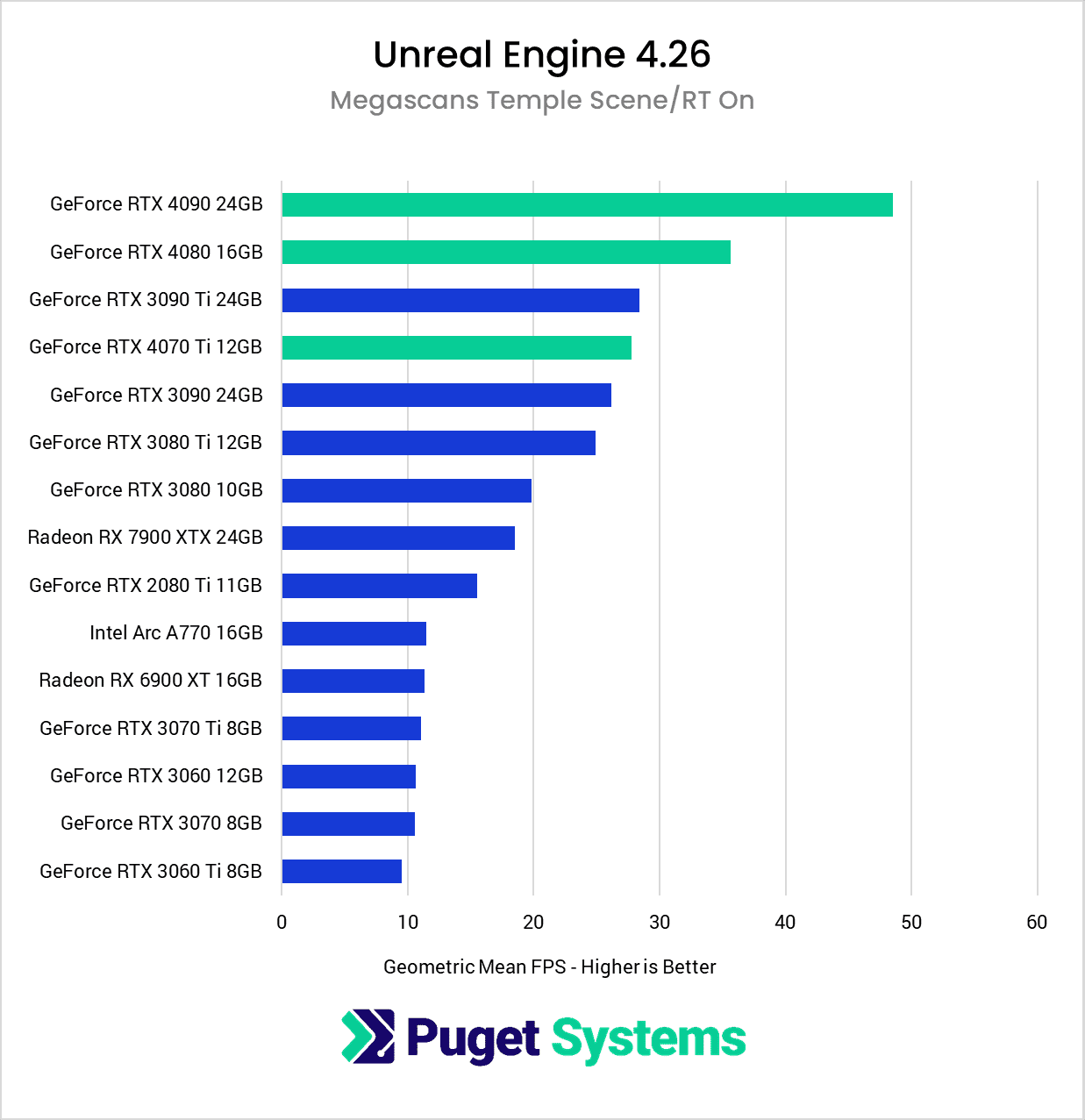Table of Contents
Introduction
NVIDIA debuted their new RTX 40 Series back in October with the release of the GeForce RTX 4090 24GB. They quickly followed this with the GeForce RTX 4080 16GB in November. After a slight delay, likely due to their initial product names, we are finally taking a look at the GeForce RTX 4070 Ti 12GB. Now that we have three GPUs from this line in hand, this seemed like a great time for us to deep dive into their performance in various content creation processes, ranging from 3D rendering to video editing. This article will explore their performance in Unreal Engine, with an emphasis on Virtual Production and Game Development.
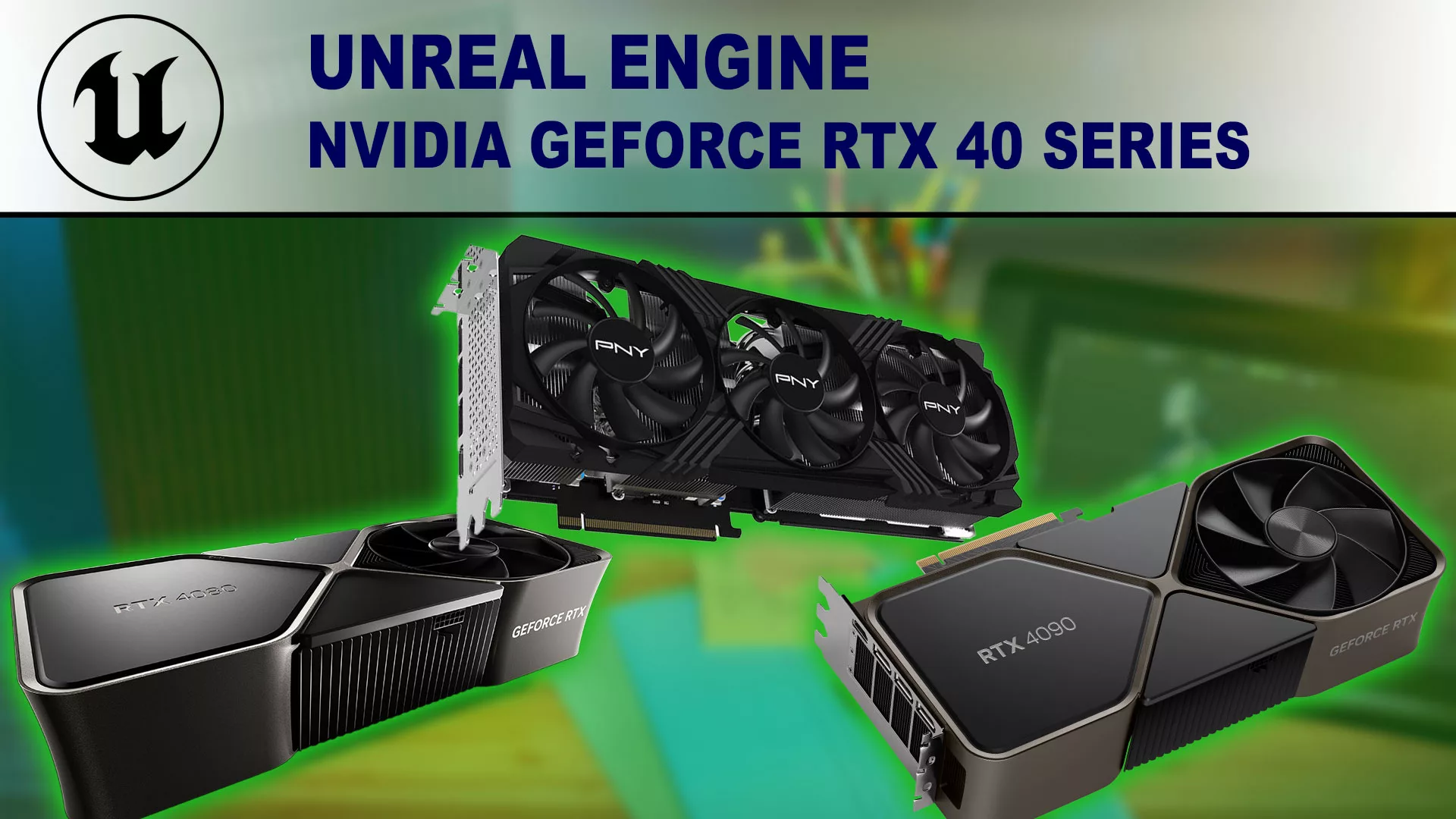
In this article, we will use Unreal Engine to examine the GeForce RTX 40 Series performance for real-time rendering. As a comparison, we will include the full lineup from the previous generation GeForce RTX 30 Series, the GeForce RTX 2080 Ti, for additional context. We’ve also included a couple of offerings from AMD, to see how they compare in different workflows.
If you want to read more about the new GeForce RTX 40 Series cards (including the 4070 Ti, 4080, and 4090) and what sets them apart from the previous generation, we recommend checking out our main NVIDIA GeForce 40 Series vs AMD Radeon 7000 for Content Creation article. That post includes more detailed information on the GPU specifications, testing results for various other applications, and the complete test setup details for the hardware and software used in our testing.
Overall Unreal Engine Performance Analysis
As we can see, the NVIDIA GeForce RTX 40 Series GPUs offer the highest potential framerates in Unreal Engine. The newest release, the RTX 4070 Ti 12GB, is nearly as fast as the RTX 3090 Ti, often trading places depending on the specific test scene use despite being a fraction of the price. At a quick glance, all three of these new RTX 40 Series video cards will be great options for Unreal Engine development. Next, we’ll dig into these results to get a more detailed look at how these stack up.
NVIDIA GeForce RTX 40 Series vs RTX 30 Series
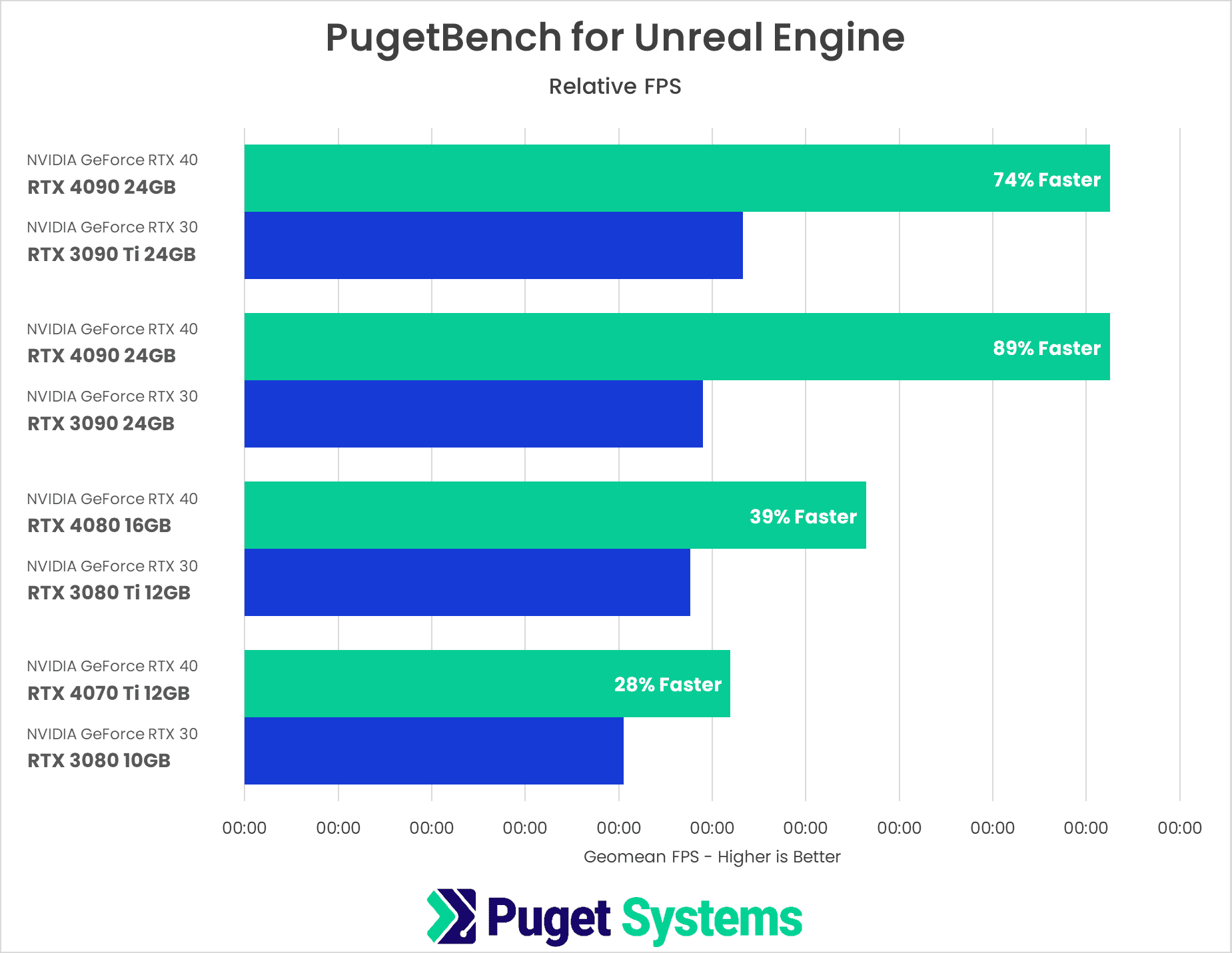
In the above chart, we compare the new generation of cards versus their closest price equivalent in the previous generation. Due to changes in architecture, supply chain, and the like, NVIDIA is not always consistent with its naming scheme, so this gives a better comparison of what performance to expect at a given price point. We added the top-of-the-line RTX 3090 Ti as well, even though it doesn’t have a price equivalent at this time.
Starting with the RTX 4090 24GB, it provides almost 90% more frames than the RTX 3090 with only a 7% price increase. For Virtual Production users, this means you will be able to put a lot more geometry or effects on the screen while still maintaining your target FPS output. It even outpaces the much more expensive RTX 3090 Ti, a GPU less than a year old. For those looking for the best-performing GPU for rendering, the RTX 4090 24GB is hands down the best option.
Moving on to the RTX 4080 16GB, this GPU costs the same as the RTX 3080 Ti yet delivers 39% more frames per second. It also increases the available VRAM from 12GB to 16GB, allowing for larger and more complex scenes. Again, this is an excellent gen-over-gen improvement.
Lastly, we look at the latest release, the RTX 4070 Ti 12GB, which is $100 more than the RTX 3080 10GB (roughly 14% more expensive). It returns 28% higher FPS for that extra cost and brings an additional 2GB of VRAM. While this is still a welcome upgrade over the RTX 3080, it’s not nearly as impressive as the RTX 4090 and 4080. If we compare by product name, the new RTX 4070 Ti is 74% faster than the RTX 3070 Ti but also 33% more expensive. However we compare it, the RTX 4070 Ti provides more performance than the cost increase, but still not as impressive as its more powerful siblings.
NVIDIA GeForce RTX 40 Series vs AMD Ryzen RX 7900 XTX
NVIDIA has long been the go-to for GPUs in Unreal Engine, although in recent years, AMD has been making huge strides in its performance and has become something to keep an eye on for these professional workflows. As an “overall” score, it doesn’t look so good for AMD, but there are some big asterisks to these results. If we look at the results of the specific tests, we can see that in the first rasterized scene, the RX 7900 XTX scores very high, approaching the NVIDIA RTX 4080. This result matches some of the gaming benchmarks seen across the internet. However, in the next rasterized scene, the 7900 XTX performs worse than their previous generation 6900 XTX. We’ve passed our findings on to AMD, and they are looking into possible causes.
Moving on to Ray Tracing workloads, which are the preferred workflow in Virtual Production. NVIDIA has a full generation lead over AMD with this technology, and the test results really show. AMD lags behind the 40 series but is close to the RTX 3080. While the RX 7900 XTX’s 24GB VRAM may be tempting, the ray tracing performance simply isn’t there for Virtual Production, but it can be a solid game dev choice when you don’t need to be pushing the GPU to its limit.
How Well Do the NVIDIA GeForce RTX 40 Series Perform in Unreal Engine?
As a whole, the NVIDIA GeForce RTX 40 Series offers great improvements in performance compared to the 30 Series. The RTX 4090 24GB is the standout performer, with 89% faster frame rates over the last generation, while the RTX 4080 16GB posted a more modest 39% speed improvement. The RTX 4070 Ti 12GB is also an improvement, even if it is only 28% faster than the RTX 3080 at a 14% higher MSRP. While this is not nearly as impressive as either the RTX 4090 or 4080, that increase in performance allows it to come close to the performance of the RTX 3090 Ti.
Anyone working with Unreal Engine will appreciate the new NVIDIA GeForce RTX 40 Series. Not only does it bring better raw performance, but also additional VRAM to the lower-end models. The biggest downside to these cards is the fact that the GeForce line has dropped NVLink, and still does not offer Sync support, so they may be of limited use in high-end Virtual Production workflows. However, they will be great for artist workstations or game developers
Keep in mind that the benchmark results in this article are strictly for Unreal Engine and that performance will vary widely in different applications. If your workflow includes other software packages, we highly recommend checking out our NVIDIA GeForce 40-Series vs AMD Radeon 7000 for Content Creation article, which includes results and links to in-depth testing for a range of other applications, including Premiere Pro, After Effects, DaVinci Resolve, Redshift, and Blender.

